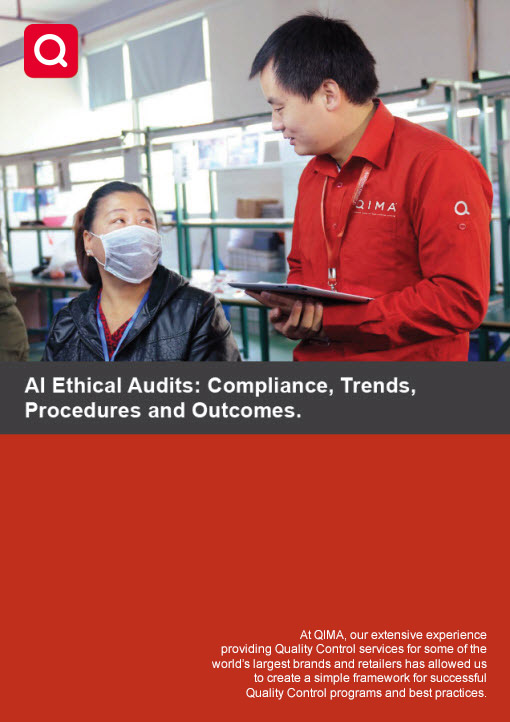Kostenlose Kurzanleitung
Ethical Audits White Paper
Lesen Sie über die Prozesse und Kriterien, die Teil eines erfolgreichen Ethikprüfungsprogramms
Dieses White Paper informiert Sie darüber :
- Die Antriebsfaktoren der Notwendigkeit für Ethikprüfungen, wie Transparenz, Korruption, Abfallentsorgung und Kinderarbeit.
- Die Prozesse und Kriterien bei der Ausführung eines erfolgreichen Ethik-Kontrollprogramms, wie Lieferanten bewertet werden und wie ethische Probleme gefunden werden können.
- Eine Fallstudie, die zeigt, wie eine Bekleidungsmarke mit QIMA zusammenarbeitete, um Kinderarbeit aus der Lieferkette zu eliminieren und die Lieferanten zur Einhaltung der Richtlinien zu bewegen.
Wenn Sie diese Inhalte von QIMA herunterladen, erklären Sie sich mit unseren Datenschutzrichtlinien und den allgemeinen Geschäftsbedingungen einverstanden
What are the Greatest Challenges to Ethical Compliance?
In modern supply chains, corruption and the lack of transparency are the two major issues that go hand in hand, especially in low-cost manufacturing destinations. In regions where corruption thrives, it gives rise to such grave problems as human rights abuses, child labor, and lack of education regarding good manufacturing practices.
Demand for ethical audits has been on the rise over the past decade, and has surged in the aftermath of the 2013 Rana Plaza disaster, which shone a light on the scale of human rights abuses and unauthorized subcontracting in global supply chain. Comprehensive supplier audit programs, conducted regularly and with meaningful follow-up, are among the crucial methods of acquiring data about the real state of supply chains.
Elements of Effective Supplier Audits
- Establishing audit criteria. Audits can be conducted to globally accepted standards (SA 8000, ETI), clients’ own corporate codes of conduct, or QIMA's best-in-class social audit protocol.
- Defining a clear scoring system. Non-compliances are categorized according to severity, and impact the outcome of the audit accordingly.
- Following a standardized process. This includes preparation, thorough on-site review (including confidential worker interviews), preparing corrective action plans (CAP), and follow-up.
- Repeat audits and follow-up. Repeat audits are performed to assess the CAP implementation and advise the client on further action.
Download the whitepaper to learn more about the state of ethical compliance in global trade and read a case study about a UK apparel brand addressing child labor risks in its supply chain.


